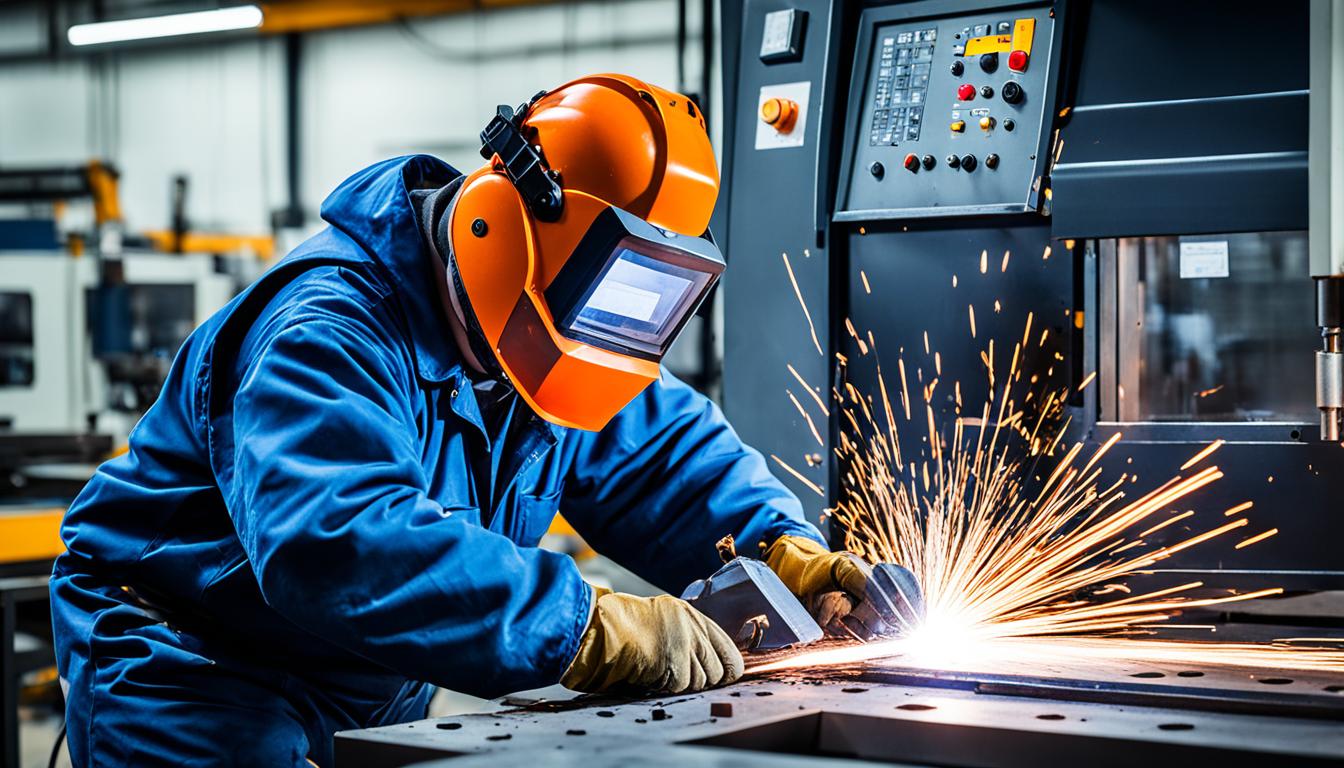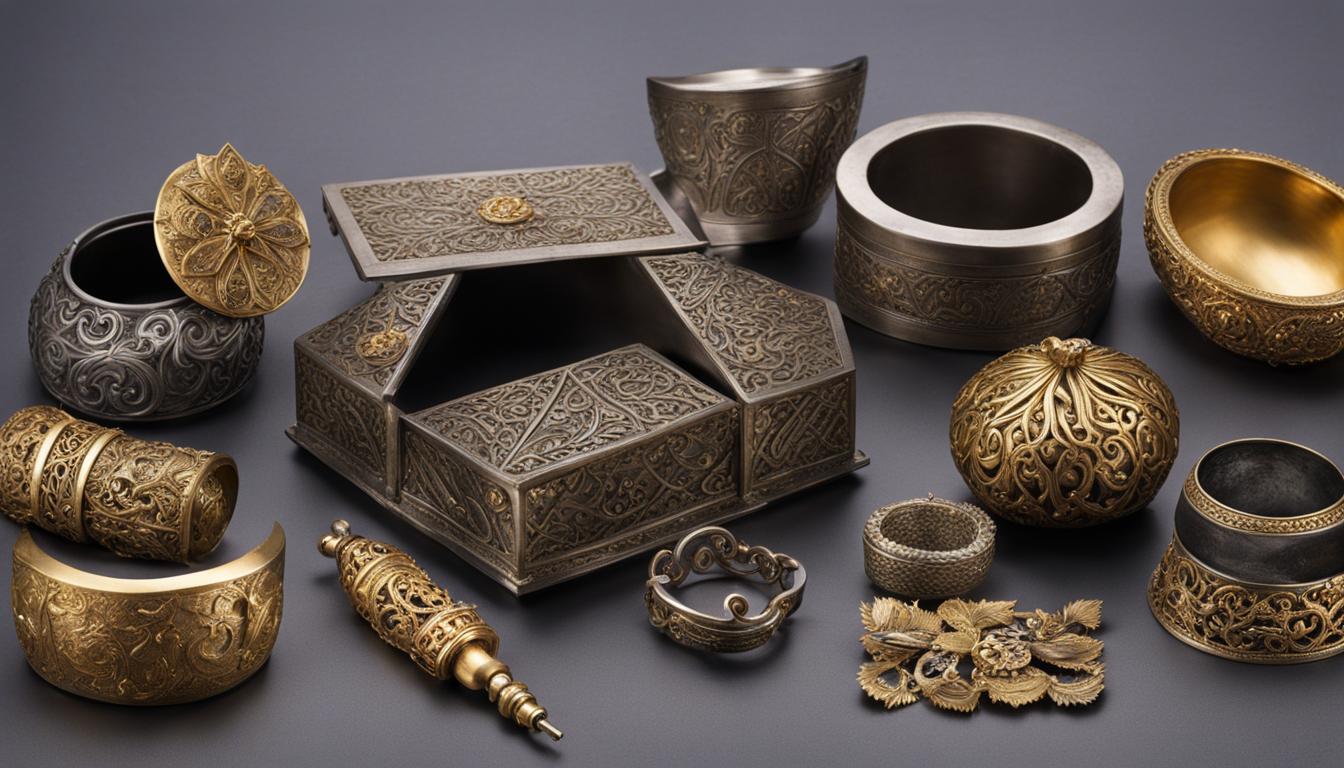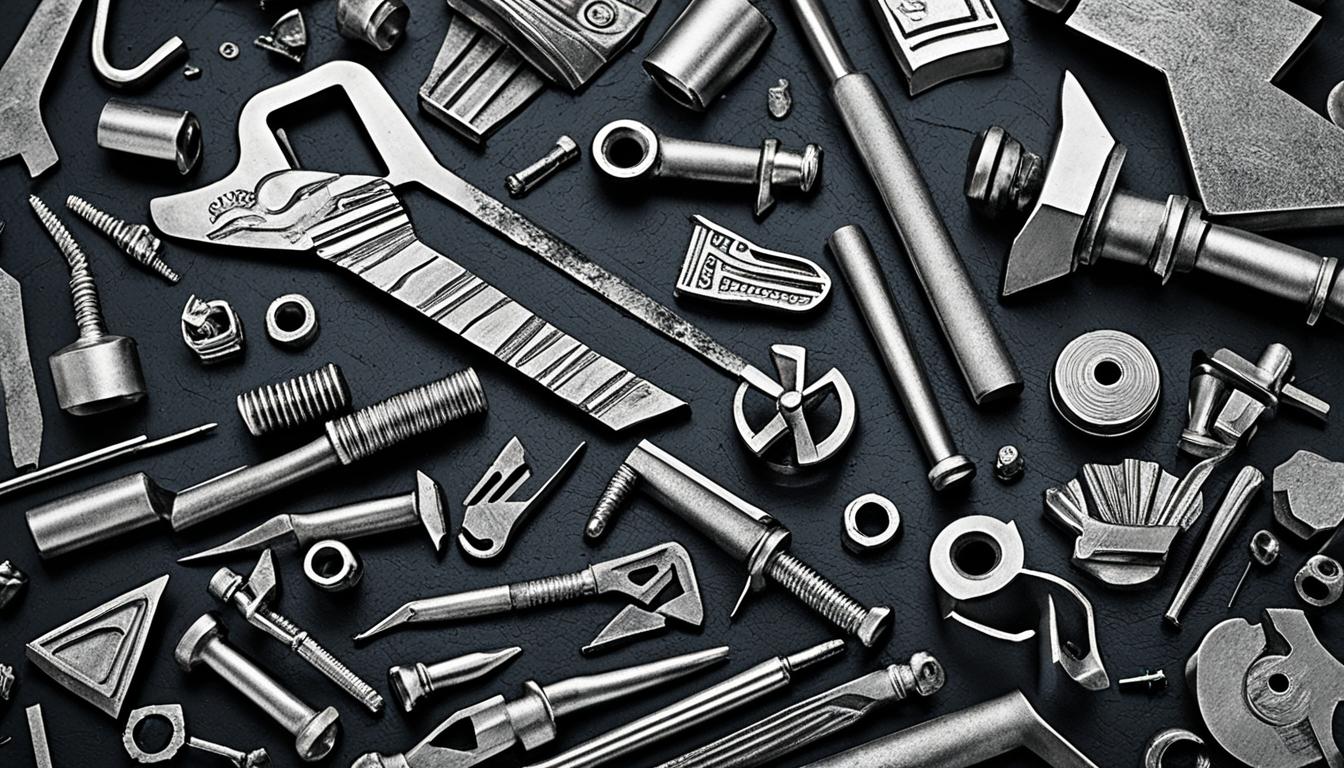Metalworking is the process of shaping and manipulating metals to create objects, structures, and components. This ancient craft, dating back to the Bronze Age around 3500 BCE, has evolved into a sophisticated industry that plays a crucial role in modern manufacturing and construction. Metalworking encompasses a wide range of techniques, including casting, forging, welding, machining, and sheet metal fabrication. Throughout history, metalworking has been instrumental in the development of tools, weapons, transportation, and infrastructure.
Today, it is essential in industries such as automotive, aerospace, electronics, and construction. Metalworkers use various tools and equipment, from simple hammers and anvils to advanced computer-controlled machines, to transform raw metals into finished products. The versatility of metalworking allows for the creation of everything from delicate jewelry to massive steel structures, making it a fundamental skill in both artistic and industrial applications. As technology advances, metalworking continues to adapt, incorporating new materials, techniques, and automation to meet the demands of an ever-changing world.
- Metalworking involves shaping and reshaping metals to create objects and structures.
- The history of metalworking dates back thousands of years and has evolved across different civilizations.
- Metalworking is used in various industries, including manufacturing, construction, and art.
- Modern metalworking processes can be categorized into forming, cutting, and joining.
- The choice of metalworking technique and tool depends on the desired outcome and the properties of the metal.
The Historical Roots of Metalworking
Metalworking has a fascinating history that traces back to ancient civilizations. This section explores the origins of metalworking, the ancient processes used, and its significance in different cultures.
The practice of metalworking predates recorded history, with evidence dating back to 8,700 BCE in northern Iraq. Excavations have revealed a copper pendant from this time, indicating early metalworking activities in the region. As civilizations developed, metalworking techniques advanced and spread to various parts of the world.
Ancient metalworking processes, such as smelting and forging, played a crucial role in shaping the development of societies. Here is a glimpse into how metalworking evolved in different civilizations:
Ancient Middle East
The Middle East, known as the Cradle of Civilization, witnessed significant advancements in metalworking. This region was rich in copper deposits, leading to the emergence of copper metallurgy. The discovery of bronze—an alloy of copper and tin—further revolutionized metalworking, enabling the creation of stronger tools and weapons.
Africa
In Africa, metalworking dates back to ancient times. The Nok civilization in West Africa is renowned for its intricate terracotta figures, showcasing skilled metalworking techniques. Ironworking also thrived in Africa, with the Bantu-speaking people playing a vital role in spreading iron metallurgy across the continent.
Europe
Metalworking was prevalent in ancient Europe, particularly during the Bronze Age. Celts, Greeks, and Romans were adept at working with metals and produced intricate jewelry, weapons, and tools. Ironworking gained prominence during the Iron Age, marking a significant shift in metalworking materials and techniques.
Asia
Asian civilizations, such as the Indus Valley civilization in present-day India and Pakistan, excelled in metalworking. Skilled artisans created intricate jewelry, pottery, and metalwork. The Silk Road also played a crucial role in the exchange of metalworking techniques between Asia, Europe, and the Middle East.
Each civilization’s unique contributions to metalworking processes and materials enriched its evolution over time. From the earliest use of copper to the discovery of bronze and the advent of iron and steel, metalworking shaped the course of human history.
Contributions of Different Civilizations to Metalworking
| Civilization | Contributions |
|---|---|
| Middle East | Early copper metallurgy Bronze production |
| Africa | Intricate terracotta figures Spread of iron metallurgy |
| Europe | Bronze Age metalworking Ironworking during the Iron Age |
| Asia | Intricate jewelry and metalwork Exchange of metalworking techniques through the Silk Road |
The contributions of these civilizations laid the foundation for modern metalworking techniques, which continue to shape our world today. In the following sections, we will explore the diverse applications of metalworking and the advancements brought about by technology in this field.
Modern Metalworking Processes
In the realm of metalworking, modern processes have evolved to encompass a wide range of techniques and tools. These processes can be broadly categorized into three main areas: forming, cutting, and joining. Each category serves a unique purpose in the creation and manipulation of metal products.
Forming Processes
Forming processes involve the shaping of metal without the removal of any material. These techniques are essential for creating objects with specific geometries and dimensions. Some common forming processes include:
- Casting: The process of pouring molten metal into a mold to create a desired shape.
- Extrusion: The process of forcing metal through a die to create long, uniform cross-sectional shapes.
- Rolling: The process of passing metal between rollers to reduce its thickness or change its shape.
Cutting Processes
Cutting processes, on the other hand, involve the removal of material from metal to achieve the desired shape or size. These techniques are commonly used for machining or fabricating metal components. Some prominent cutting processes include:
- Milling: The process of removing material from a workpiece using rotary cutters.
- Turning: The process of shaping a workpiece by rotating it against a cutting tool.
- Grinding: The process of using abrasive particles to remove excess material and improve surface finish.
- Drilling: The process of creating holes in metal using a rotating drill bit.
Joining Processes
Joining processes involve combining multiple pieces of metal to create larger structures or assemblies. These techniques are crucial for fabricating complex metal products. Some popular joining processes include:
- Welding: The process of fusing metal pieces together using heat and pressure.
- Brazing: The process of joining metal pieces by melting a filler metal that flows between the joint.
- Soldering: The process of joining metal pieces by melting a lower melting point metal alloy.
Machine tools play a vital role in enabling precise and efficient metalworking processes. From lathes and milling machines to drills and grinders, these tools provide the necessary accuracy and control required for producing high-quality metal products.

Modern Metalworking Processes
Overview of Modern Metalworking Processes
| Process Category | Common Techniques |
|---|---|
| Forming |
|
| Cutting |
|
| Joining |
|
Evolution of Metalworking Materials
The development of metalworking processes has been intricately linked to the availability and discovery of various metals. Throughout history, different metals have played a crucial role in shaping the evolution of metalworking techniques and materials. Let’s explore the significant milestones in the development of metalworking materials.
1. Copper
Copper was one of the first metals to be utilized in metalworking. Its excellent conductivity and malleability made it an ideal material for early metalworking processes. Ancient civilizations such as the Egyptians and Mesopotamians used copper to create tools, weapons, and decorative objects.
2. Bronze
The discovery of bronze, an alloy of copper and tin, marked a significant advancement in metalworking. Bronze had superior strength and durability compared to copper, making it an ideal material for weapons, armor, and tools. The Bronze Age heralded a new era in metalworking, as civilizations across the world embraced the potential of this versatile alloy.
3. Iron and Steel
The Iron Age revolutionized metalworking with the discovery and widespread use of iron. Iron had superior strength and hardness compared to copper and bronze, leading to significant advancements in various industries. Iron was used in construction, weaponry, agricultural tools, and more. Over time, advancements in metallurgy led to the development of steel, an alloy of iron and carbon, which further expanded the possibilities in metalworking.
Today, iron and steel remain crucial materials in metalworking, widely used in construction, automotive manufacturing, and numerous other industries. The versatility and strength of steel make it a preferred choice for various applications.
4. Advancements and New Alloys
Metallurgy and technological advancements have continuously expanded the range of metalworking materials available. The development of new alloys, such as stainless steel, aluminum alloys, and titanium alloys, has opened up new possibilities in terms of strength, corrosion resistance, and weight reduction.
The constant pursuit of innovation in metalworking has led to the discovery and application of novel materials with unique properties. From alloys used in aerospace engineering to specialized materials for high-temperature applications, the evolution of metalworking materials continues to push the boundaries of what is achievable.
5. Summary
The evolution of metalworking materials has been a dynamic journey, closely intertwined with human exploration and technological advancements. From the early use of copper to the discovery of bronze, iron, and steel, each material has played a vital role in shaping the capabilities and applications of metalworking. The development of new alloys and materials continues to drive innovation in the field, enabling a wide range of industries to thrive and transform our world.
Common Metalworking Techniques and Tools
Metalworking is a versatile field that employs a wide range of techniques and tools to shape and manipulate metal. Whether it’s machining, forging, casting, welding, or bending, each technique plays a crucial role in the metalworking process.
Machining
Machining is a fundamental metalworking technique that involves the use of various machine tools to shape metal workpieces with precision and accuracy. Common machining tools include:
- Lathes: A machine tool used to rotate a workpiece while a cutting tool shapes it.
- Milling machines: These machines use rotary cutters to remove material from metal workpieces.
- Drills: Used for creating holes in metal by rotating a cutting tool.
These machine tools are essential for achieving specific dimensions, shapes, and surface finishes in metal components and products.
Forging
Forging is a metalworking technique that involves shaping metal by applying force and heat. This process is commonly used to create strong, durable, and intricate metal parts. The primary tools used in forging are hammers and anvils, which are used to deform the metal by striking it repeatedly.
Other Common Techniques
In addition to machining and forging, there are several other common metalworking techniques:
- Casting: Involves pouring molten metal into a mold to create a desired shape.
- Welding: Joins two or more metal pieces together by melting and fusing them.
- Bending: Involves using specialized tools to bend and shape metal sheets or bars.
These techniques offer flexibility and versatility in manipulating metal to meet specific design requirements.
When determining which technique and tool to use, metalworkers consider factors such as the desired outcome, the properties of the metal, and the complexity of the project. The choice of technique ultimately plays a significant role in achieving the desired results in metalworking processes.
| Technique | Tools |
|---|---|
| Machining | Lathes, milling machines, drills |
| Forging | Hammers, anvils |
| Casting | Molds, furnaces |
| Welding | Welding machines, electrodes |
| Bending | Press brakes, tube benders |
Through a combination of these techniques and tools, metalworkers bring their artistic and technical visions to life, creating a wide range of products and structures that serve a multitude of functional and aesthetic purposes.
Applications of Metalworking
Metalworking finds extensive applications in various industries, playing a crucial role in manufacturing, construction, and artistic endeavors. Let’s explore the diverse industrial uses of metalworking and its artistic applications in detail:
Industrial Uses of Metalworking
In the manufacturing sector, metalworking techniques are employed to create a wide range of products that we use in our daily lives. Some notable examples include:
- Automobiles: Metalworking is vital in the fabrication of vehicle frames, engine components, and other crucial parts.
- Aircraft: Metalworking enables the production of lightweight yet durable airplane structures, wings, and landing gear.
- Appliances: From refrigerators to washing machines, metalworking is instrumental in manufacturing high-quality, durable household appliances.
- Machinery: Metalworking is essential for the production of industrial machinery used in factories, construction sites, and other sectors.
Moreover, metalworking plays a pivotal role in the construction industry, where metal structures are widely used. Metalworking applications in construction include:
- Buildings: Metalworking techniques allow for the construction of skyscrapers, commercial buildings, and residential complexes with robust metal frameworks.
- Bridges: Metalworking ensures the fabrication of sturdy bridge structures capable of withstanding heavy loads and adverse weather conditions.
- Infrastructure: Metalworking contributes to the construction of tunnels, pipelines, and other key components of urban infrastructure.
Metalworking in Art
Beyond its industrial uses, metalworking serves as a medium of artistic expression. Talented metal artists create intricate sculptures, stunning jewelry pieces, and ornamental items using various metalworking techniques. These artistic applications of metalworking allow artists to showcase their creativity and craftsmanship.
The versatility of metalworking processes and materials offers endless possibilities for artists to explore different forms, textures, and finishes. From abstract sculptures to finely crafted jewelry, metalworking allows artists to transform simple metals into captivating works of art.
Here is an example of a captivating metal sculpture created through metalworking:

| Artist | Title | Material | Description |
|---|---|---|---|
| Alexander Calder | Clouds and Spheres | Steel | A mesmerizing sculpture composed of geometric shapes suspended in the air, representing the artist’s abstract interpretation of clouds and celestial bodies. |
Through their artistic creations, metal artists inspire and engage viewers, showcasing the beauty and versatility of metalworking in the realm of art.
Impact of Technology on Metalworking
Technology has brought significant advancements to the metalworking industry, transforming traditional processes and revolutionizing production methods. Automation and computer numerical control (CNC) machining, in particular, have had a profound impact on metalworking, enhancing precision, efficiency, and productivity.
Automation and CNC machining have paved the way for faster and more accurate production of metal components. These technologies allow for complex tasks to be performed with minimal human intervention, resulting in higher quality outputs and reduced production times. CNC machines are capable of executing intricate designs and achieving tight tolerances, which would be challenging with manual operations.
One of the key advantages of automation and CNC machining is the ability to optimize workflows and minimize waste. By incorporating advanced software and simulation tools, metalworking processes can be precisely programmed, maximizing material utilization and reducing errors. Virtual simulations enable designers and engineers to refine their designs before production, averting costly mistakes and ensuring optimal performance.
Moreover, automation and CNC machining enable manufacturers to improve their competitiveness in a global market. These technologies facilitate faster turnaround times, enabling businesses to meet customer demands more efficiently. The precision and consistency offered by CNC machines also contribute to the overall quality and reliability of metal products.
It is worth noting that while automation and CNC machining have automated various aspects of metalworking, skilled human labor remains crucial. Operators and technicians are responsible for programming and monitoring the machines, as well as performing maintenance and quality control checks.
Overall, the integration of technology in metalworking, particularly automation and CNC machining, has had a transformative impact on the industry. These advancements have elevated the possibilities and capabilities of metalworking processes, resulting in improved efficiency, precision, and quality in the production of metal components.
The Advantages of Technology in Metalworking:
- Increased precision and accuracy
- Enhanced productivity and efficiency
- Optimized workflows and reduced waste
- Faster turnaround times
- Improved quality and reliability
Metalworking in the Future
The future of metalworking is filled with exciting possibilities and advancements that are set to revolutionize the industry. With the rapid development of technology and the advent of additive manufacturing, metalworking is entering a new era of innovation and customization.
Additive Manufacturing: Expanding Capabilities
Advancements in additive manufacturing, commonly known as 3D printing, have been instrumental in expanding the capabilities of metalworking. This innovative technique allows for the production of complex, customized metal parts that were previously difficult or even impossible to create using traditional manufacturing methods.
Materials Science and Nanotechnology: Enhancing Properties
Materials science and nanotechnology are playing a crucial role in shaping the future of metalworking. Researchers are exploring new alloys and materials with enhanced properties, such as higher strength, improved durability, and superior corrosion resistance. These advancements open up new opportunities for creating more reliable and efficient metal products.
Efficiency, Sustainability, and Versatility
As technology continues to evolve, metalworking is expected to become more efficient, sustainable, and versatile. Automation and advanced robotics are streamlining production processes, reducing costs, and minimizing wastage. Additionally, the integration of sustainable practices and materials in metalworking will contribute to a greener and more environmentally friendly industry.
The future of metalworking holds immense potential, with ongoing research and development driving the industry forward. By harnessing the power of additive manufacturing, pushing the boundaries of materials science, and embracing sustainable practices, metalworking is poised to become more innovative, adaptable, and impactful than ever before.
Conclusion
Metalworking, with its rich history and diverse applications, has had a profound impact on the world we live in today. From ancient civilizations like Egypt and Mesopotamia to modern industries, metalworking has shaped our lives in countless ways.
Throughout history, metalworking techniques evolved, giving birth to innovative processes such as casting, forging, and machining. These methods enabled the creation of intricate metal objects, from tools and weapons to machinery and infrastructure.
With the advent of technology, metalworking has entered a new era of possibilities. Automation and CNC machining have revolutionized production, ensuring precision, efficiency, and increased productivity. Furthermore, additive manufacturing, or 3D printing, is pushing the boundaries of what is achievable in metalworking, allowing for the production of complex, customized metal parts.
As materials science and nanotechnology advance, metalworking will continue to expand, offering limitless opportunities for innovation and progress. The future of metalworking is bright, providing a platform where creativity and technology converge to shape the world of tomorrow.
